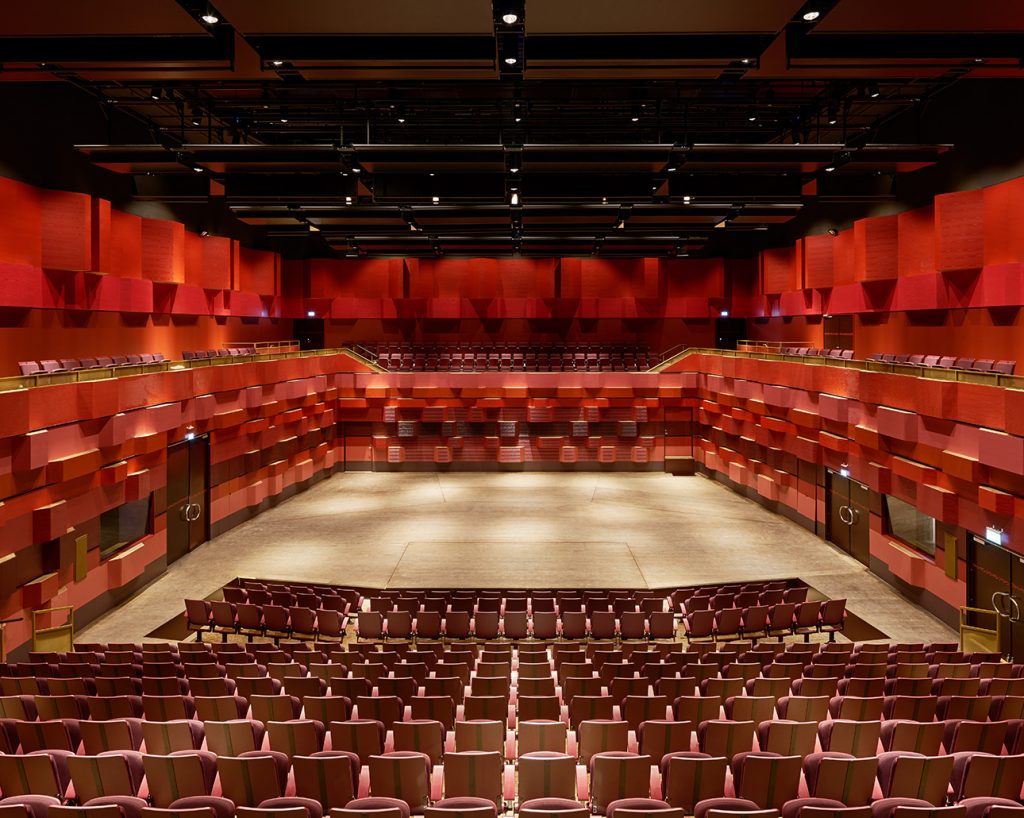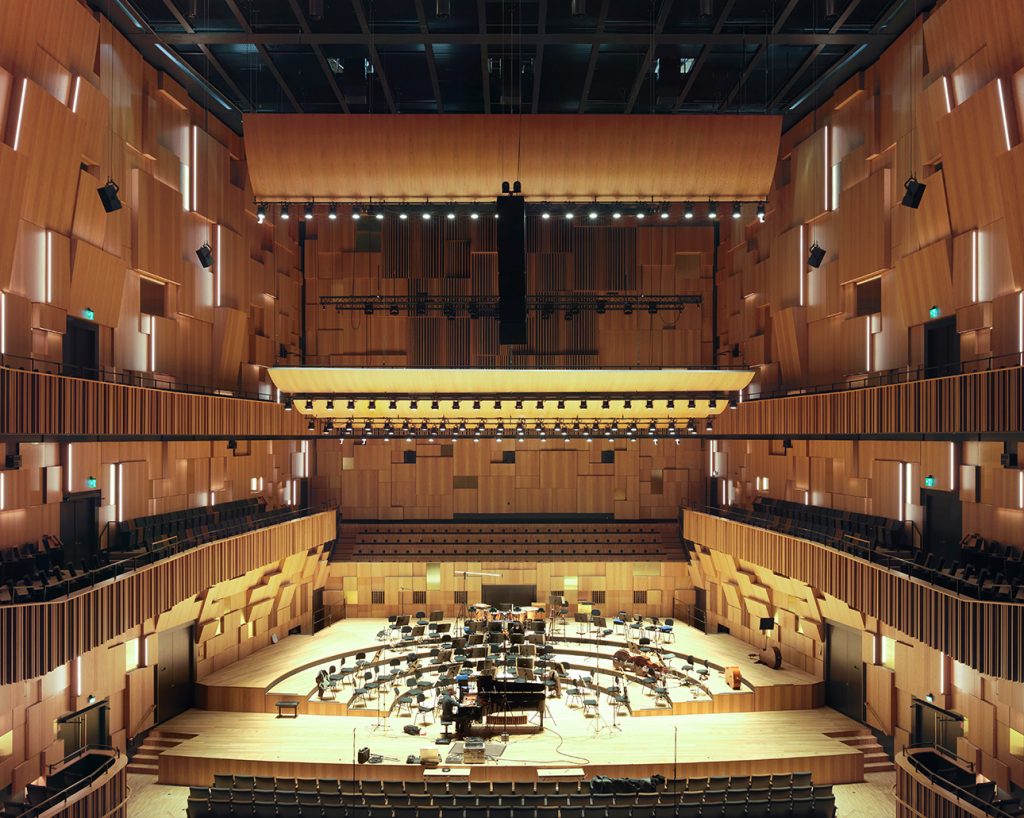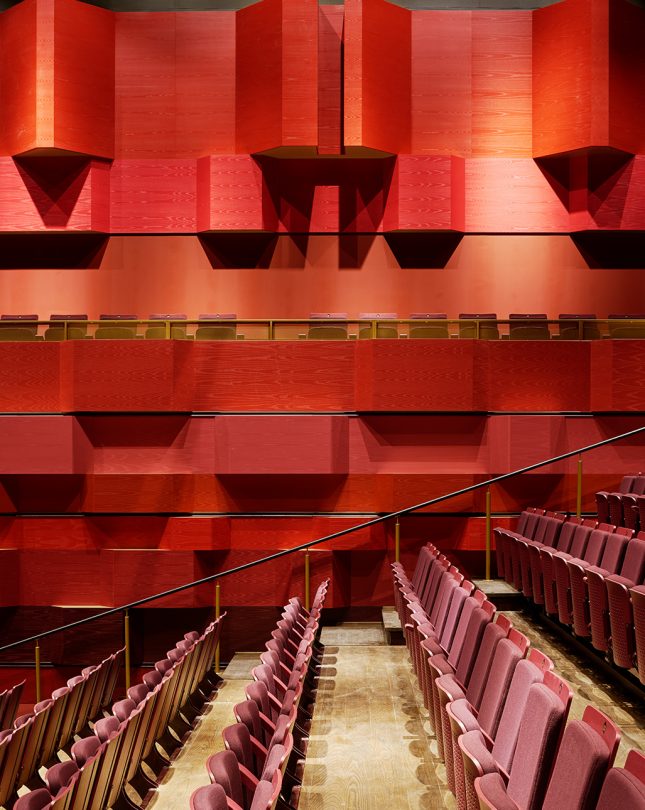Our latest news and views English
Underpinned by our Scandinavian design heritage, we bring you regular stories about architecture and interiors, exploring natural materials, acoustics, and the creation of safe and harmonious environments.
The legendary Swedish acoustician Jan-Inge Gustafsson, senior consultant with Norconsult, joins us for a conversation about concert halls, collaborating with architects, and the creative process.

Engineering’s loss was acoustics’ gain, explains Jan-Inge Gustafsson, referring to his switch of subjects at university, “I soon realised engineering wasn’t enough for me. I played the clarinet since I was seven years old and I was also very technical. Thanks to my interest in music, the world of acoustics was accessible to me; without it I wouldn’t have had this career.”
He goes on to say that acoustic consultants work on many different aspects of optimising spaces for sound, from eliminating noises caused by ventilation systems to ensuring diners can hear each other in restaurants to making sure theatre actors are audible to their audiences. His particular specialism is concert hall acoustics. Projects Gustafsson has worked on with Gustafs include Malmö Live and the Royal College of Music in Stockholm.
Getting into the detail of developing the best acoustic performance, he explains that some concert halls, say a rock concert venue, are primarily for amplified music while others are for non-amplified orchestral work.
“Many are mixed use which means a lot of my work is about balancing acoustic requirements, which is where my years of experience come into play,” he explains.
Gustafsson’s aim in the world of concert halls is to please all of the music lovers all of the time. Maybe the majority won’t notice the minute differences in sound quality he says, adding, “There will always be someone who is able to critique and distinguish the intricacies of a venue’s acoustics.
And of course, the musicians and the conductors notice!” Those formative years practicing the clarinet and saxophone have, he says, helped him get into the mindset of a musician. The concert hall is, after all, their working environment and therefore must be somewhere they feel comfortable to create. A venue’s acoustics are critical in its reputation: its ability to attract the best performers as well as keeping audiences happy.

As far as collaboration goes, “Ideally I get involved as soon as the architect’s pencil meets the paper!” he says. “Concert halls need to be shaped from the inside out. This is such an important concept for architects to understand.” Geometry plays a key part in optimum acoustic performance. “The width of the hall will affect how long it takes for the sound to reflect between the walls. We also need to consider natural reflection from the sides, making sure the sound reaches the audience from all directions.” In that instance, architect and acoustician may start discussing elements such as side balconies, as these help reflect and diffuse the sound waves.
With prominent Swedish practice Wingårdhs Arkitektkontor, Gustafsson and his team at Norconsult have been involved as early at the submission stage for various competitions. “In a good collaboration, ideas are triggered by each other, which is the exciting bit. This is also how we develop our own specialisms: when we’re inspired to find new solutions and see things from a new perspective.” He says he relishes the challenge when he gets some resistance. “I provide the architect with the ‘rules’ to play by, and they give me a design problem back!”
Both the visual and acoustic experience go hand in hand but he concedes,
“perhaps the performer is slightly more important to me. Ultimately, they are carrying out the creative work. The interplay between the performers and the audience is very important too!”


Diving deeper into the projects Gustafsson has worked on, he says of Malmö Live, which completed in 2015 and is considered by many to be one of Sweden’s premier live music venue, “We collaborated closely with architects Schmidt Hammer Lassen (SHL), arriving at several solutions.” These included ‘Mondrian’ elements which were boxes inspired by the work of artist Piet Mondrian. Gustafsson calculated the exact dimensions that would give optimum sound to the range of international stars and local acts who play at the venue. “Here I also influenced the decision on the wood finish – I felt that the original choice would have been too dark for the performers. In the end a beautiful natural oak finish [from Gustafs] was used.”
The Royal College of Music in Stockholm, which was inaugurated by King Carl Gustav XVI in early 2017, presented different challenges. “The main hall was a smaller space to work with, yet needed to accommodate a large orchestra.” To address this, Gustafsson collaborated closely with AIX Arkitekter from the competition submission stage, together opting for a design whereby the ceiling height was raised to increase the physical volume of the space.
At the same time acoustic elements were installed into the ceiling to create the correct acoustic balance for the various types of performances held at the venue. Unlike Malmö Live, there were no balconies to help with sound diffusion in this space. “We therefore had to create elements that would break up the sound waves at the sides of the auditorium.” he explains, and adds, “We had a great collaboration, the lead architect, Annika Askerblom, really understood where I was coming from and we could bounce ideas off each other.”
Summing up the importance of collaboration, he adds finally, “Working relationships like these are truly where creativity and innovation develops.”
